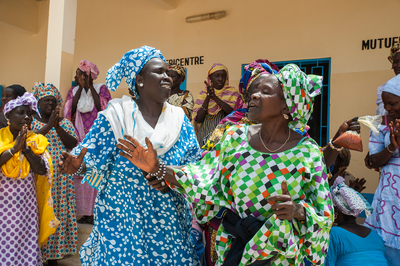Epicenter Strategy in Africa
Starting in 1991 The Hunger Project has been working in partnership with people and leaders in East, West and Southern Africa and ever since then has developed a so called epicenter strategy, which is both cost-effective and easily transferable.
This bottom-up strategy has proved to be very successful in conquering hunger and poverty in rural Africa.
- Factsheet: Epicenter Strategy
- THP Swiss in Burkina Faso, Ethiopia, Ghana, Mozambique
Dynamic Centers

Groups of villages combine into dynamic centers where they learn to act cooperatively in order to meet their basic needs. Moreover, they gain access to so far unknown or untapped government resources.
The epicenters are situated in regions which are far apart (more than 20 km) from small and larger cities and for this reason are cut off from health services, schools, markets and often also from services of the other non-governmental organizations.
4 phases in 8 years
The epicenter strategy is divided into four phases that are clearly distinguishable, and it guides people in the space of about eight years from extreme poverty to a life of self-reliance.
Infographic: The Hunger Project`s Epicenter Strateg
The basic attitude of people that is affected at the outset by dependency, resignation and discrimination of women is changed by this process. A new attitude that is based on responsibility, self-reliance and gender equality is able to develop.
Success Record

To this day, a total of 121 epicenters in eight African countries have been set up. They reach almost two million people and allow them sustainable improvements in the fields of health, education, food and family income.
We are looking for contribution in the following programs:
- Livelihood & Microfinance
- Health & Nutrition
- Gender Equality , Food Security
- Community Mobilization
- Literacy & Education
- Water, Sanitation & Environment
- Monitoring & Evaluation

Invest in People!
Newsletter (3x annually)
Enter your email below.
Get Connected
Quote
"For me, the Hunger Project means a continuous opportunity to feel and express the solidarity and partnership with the people who live in extreme poverty in Asia, Africa and Latin America. Over the years, huge potential has been released in me and my partners in the affected countries – resulting in sustainable improvements in the quality of life for all."
Dr. iur. Daniel Heini, board member, has been supporting THP for more than 20 years


